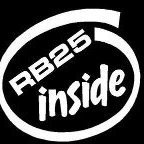Diff/rear End Location
Announcements
-
Similar Content
-
Latest Posts
-
By Last Phantom · Posted
I found a supplier for an arm in NZ. https://thrashgaragenz.com/products/nissan-skyline-v35-z33-350z-front-lower-straight-arm-rh-side?srsltid=AfmBOopMdfCFDc_8yVZZ9kq5nIngPHRTBzUU8v4SAptJaRO52Wjs0bC6 I looked closely at the photo of that one and the Z1 arm, and it's the same bloody arm. Scratches all match in the photo 😂 How hard is it to change that joint? Also they seem to be listing two options https://thrashgaragenz.com/products/nissan-skyline-v35-z33-350z-front-lower-straight-arm-balljoint-rh-side?_pos=1&_sid=229acde44&_ss=r And now I have no idea what size I'd need yay -
Ill review it again, from memory when I first saw some of Trailer Park Boys I wasn't a huge fan. I ended up at Letter Kenny after watching Shoresy, which is a bit ass backward, ha ha
-
"lol dunno" either But like you, I can't see any reason they would need to be different LHD to RHD
-
I agree with you WRT the hard top. MX5's may be one of the better looking soft tops but I cannot think of ANY car, EVER that looks better with a soft top vs a hard top (or a designed roof). At all, ever. I also feel this way about the C5 Vette, the Z06 looks horrible compared to it's original form, it has an exaggerated version of the differences you're talking about.
-
By Last Phantom · Posted
Hey crew, Failed my WOF cause of a lower control arm, and I've decided to hit both arms, and also the compression rods at the same time(seems they're gonna be the most likely upcoming failure points from some discussions with the lads over on the G35 reddit). I've looking at these form Z1: https://www.z1motorsports.com/front-suspension/hayaku-automotive/hayaku-g35-front-compression-rod-p-40716.html https://www.z1motorsports.com/front-suspension/hayaku-automotive/hayaku-g35-front-lower-control-arm-p-40674.html I asked Z1 if they'd work as it's the same platform, just RHD vs LHD. I basically got told "Lol dunno". Specifically they aren't aware of any difference but can't guarantee fitment as they haven't done it on a 350GT. So guess I'm asking is if there is any issues with using 2005 G35 coupe suspension parts on a 2005 350GT coupe? Orginally I thought it could be something in the way of the arms that each control arm is designed to be positioned around, but that'd be an engineering nightmare for Nissan needing two different shaped control arms 😅
-







Recommended Posts
Create an account or sign in to comment
You need to be a member in order to leave a comment
Create an account
Sign up for a new account in our community. It's easy!
Register a new accountSign in
Already have an account? Sign in here.
Sign In Now